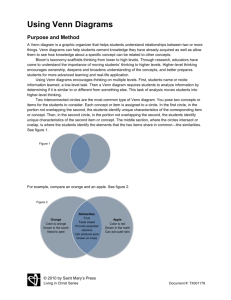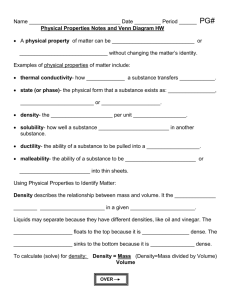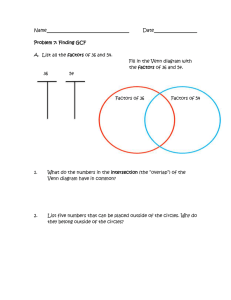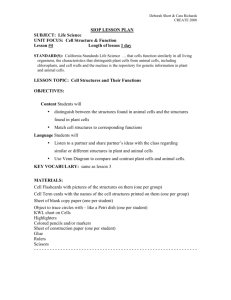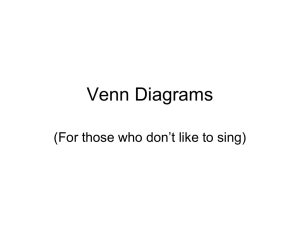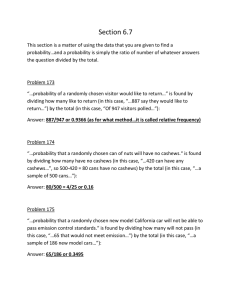Venn diagram - mindysuededominicis
advertisement
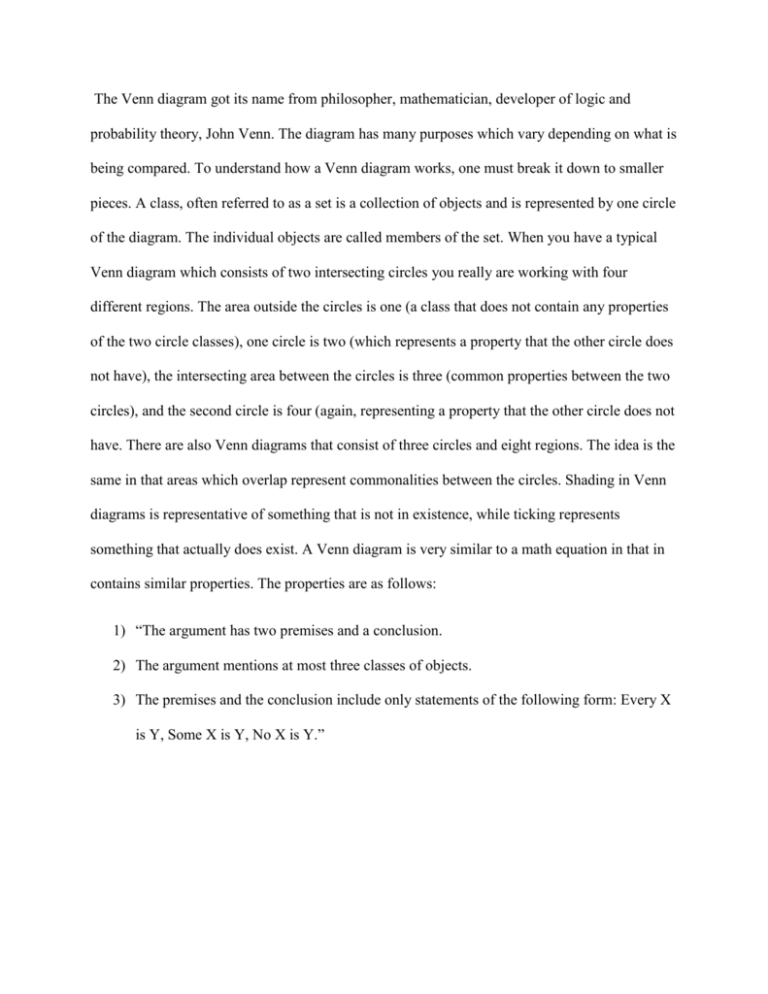
The Venn diagram got its name from philosopher, mathematician, developer of logic and probability theory, John Venn. The diagram has many purposes which vary depending on what is being compared. To understand how a Venn diagram works, one must break it down to smaller pieces. A class, often referred to as a set is a collection of objects and is represented by one circle of the diagram. The individual objects are called members of the set. When you have a typical Venn diagram which consists of two intersecting circles you really are working with four different regions. The area outside the circles is one (a class that does not contain any properties of the two circle classes), one circle is two (which represents a property that the other circle does not have), the intersecting area between the circles is three (common properties between the two circles), and the second circle is four (again, representing a property that the other circle does not have. There are also Venn diagrams that consist of three circles and eight regions. The idea is the same in that areas which overlap represent commonalities between the circles. Shading in Venn diagrams is representative of something that is not in existence, while ticking represents something that actually does exist. A Venn diagram is very similar to a math equation in that in contains similar properties. The properties are as follows: 1) “The argument has two premises and a conclusion. 2) The argument mentions at most three classes of objects. 3) The premises and the conclusion include only statements of the following form: Every X is Y, Some X is Y, No X is Y.”



